#sword history
Text
hey does anyone know anything about swords?
my coworker found this in a toolbox that’d belonged to her grandfather
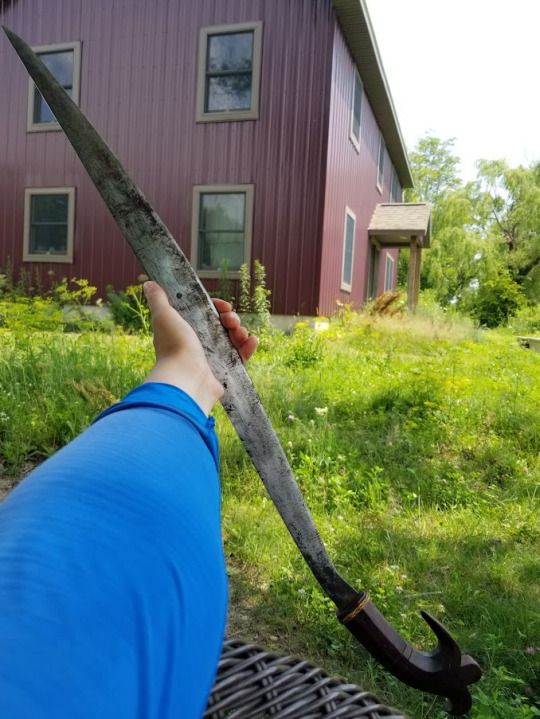
It’s a single edge. Hilt is the same wood as the scabbard


Construction of the scabbard is gorgeous. One thick layer of wood, carved out to fit the blade, and attached to a thin layer of wood using tiny little pegs.
Both the sword and scabbard have decorative braidwork on them. It’s a very utilitarian piece, but no less beautiful.
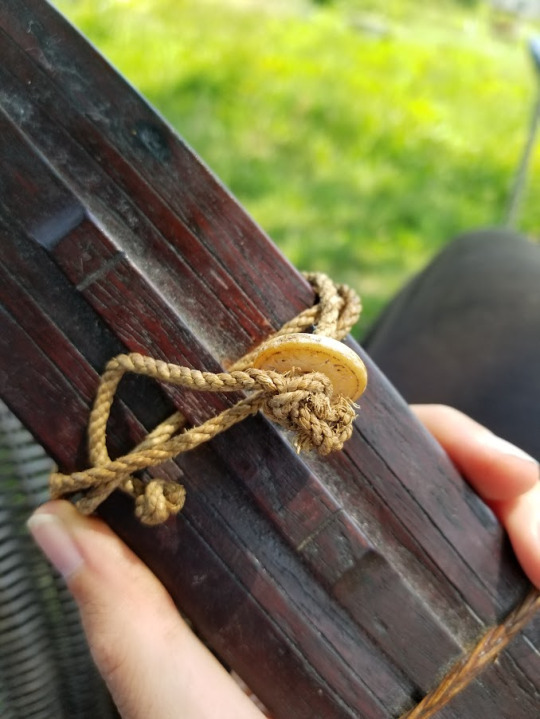
Other coworker and I agree it’s likely middle eastern. Said grandfather did not travel and was not in the military, but lived in san francisco for a bit, so could’ve possibly acquired it there.
69 notes
·
View notes
Note
I quite like swords, do you have any fun facts on them
(Axes are fine too)
Well, since I already did a whole post on Axes, which you can read here:
I might as well do my due diligence and info dump on my knowledge of swords so ... I should have expected this but here we go:
A Brief (lmao not at all) Overview of a Complicated Sword History
by an autistic trans girl demon
So before we get started, first we have to understand the categorization of swords. What we know as a "sword" is a general term from Old English deriving from the word "Sweord", meaning a "long bladed weapon with a handle and sometimes a hilt that is designed to stab, hew, cut, or slice; this means if it was clearly designed not to stab, hew, cut, or slice, and doesn't have an arbitrarily "long" blade, it's not a sword. Secondly, a lot of historical sources really only focus on swords as weapons, not tools, and thus we have an issue where tools that fall under the same description of swords won't typically be called swords but classified as "this other totally not a sword thing". Thirdly, swords were a slow development from daggers, which were classified loosely as double edged blades of a knifes size. If you're not following yet, this classification doesn't apply to all long-bladed creations and rarely do we get accounts of their use as tools because of this. That is, unless, you start looking at the few tools that became swords. And additionally, we have to remember that other cultures had definitions for tools, weapons, and items that crossed over or into what the English defined as a "sword" meaning that the "sword" category starts getting messy real quick. This simply isn't as clean as "wedge-on-a-stick" (axe) or "short sharp thing with handle" (knife). And rather than define what is a sword by it's common definition, it's actually better to look at what has become classified as a "sword" despite not quite meeting the definition initially defined as "a long double bladed weapon with a handle and sometimes a hilt" and those creations that should be classified as swords but aren't.
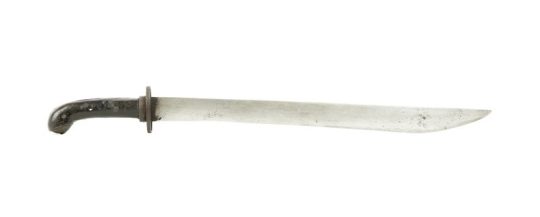
Which we begin the "sword-enough" category in China with the Dao. The above image is the Duan Dao. Dao are single edged long bladed weapons that showed up somewhere in 1600 to 1050 B.C. during the Shang Dynasty period but gained popularity as a cavalry sword much later. There are many types of Dao, each classified by their blade length, blade type, handle length, etc. and had strict requirements for construction. It was used like a sword, but only had one edge, so we called it a sword despite it's cousin the Dao phased out, the Jian, actually fitting the initial "sword" description perfectly.
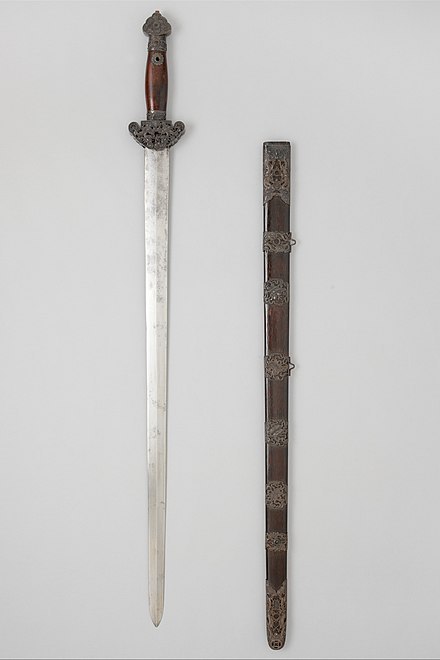
A version of a Jian for reference.
But I can hear it coming: isn't a Dao just a Sabre? And sure, the image I showed LOOKS like a Sabre, but thats because of the Dao's complex history and how it evolved over time. It at one time looked like this:
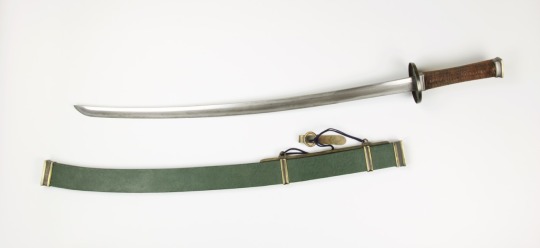
Which is a Wodao, a variant if the Dao that looked and often had very close similarities to another "shouldn't be a sword but is" creation from a different country. That is, the one edged blade known as ...
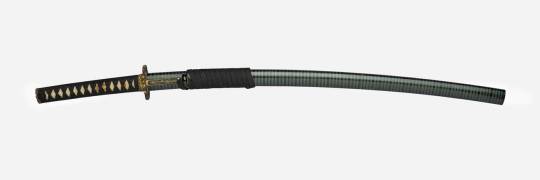
The Katana. But oh wait, this is actually part of a series! See out of all the "swords that shouldn't be swords" from Japan, the Katana has a shorter cousin, the Wakizashi, which is slightly smaller in blade and hilt, and the Tanto which should be a knife, but somehow squeezed itself in. All of these weapons have specific requirements to their construction to be called what they are from blade and tang length, to steel folding requirements, etc. but all have one thing in common: they've only got one edge. And next up from another edge of the world is ...
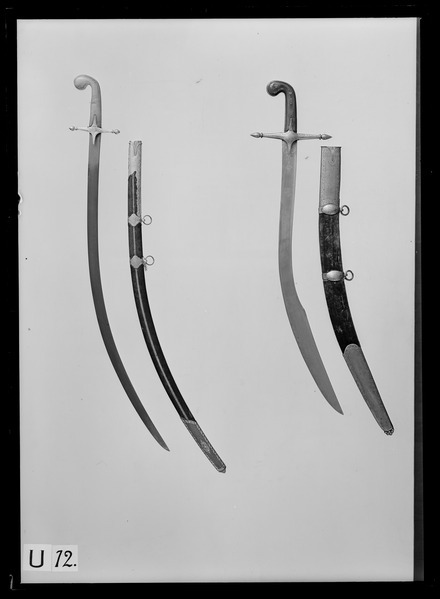
The Scimitar. A bastardization of the Persian word Shamshir, which is an entire classification of swords with curved blades that some Sabres, Dao, and at one point Katana's were all classified as. This category of one bladed swords is massive and includes weapons from North Africa to the Middle East to some areas in Europe. And is this rants segway into the tools category, starting with dancing swords. Now bear with me because I don't have a photo for this one; just a rant. While sword dancing began as training exercises for many cultures, it became entertainment and from it birthed a subcategory of unbladed swords that were flimsier, more flexible, and less likely to cut you. Unlike dancing with axes where the most that was done at best was a blunting of the blade, dancing swords aren't able to be resharpened to be weapons but are rather "tools" of entertainment. Despite not being bladed at all, or intended to stab, cut, hew, or slice, they look like swords and thats enough to call them swords. But want to know who doesn't get this treatment?
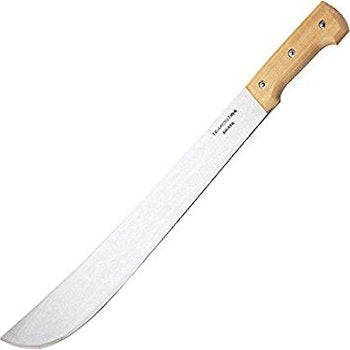
The Machete. Tanto gets to squeeze in on sword, but this is just a "long bladed knife". It's history is supposedly grounded in South America as a bush clearing and harvesting tool. But it's a tool, not a weapon, and thus in it's own class. Another familiar face stuck in it's own class is ...
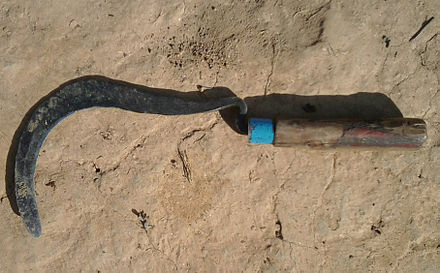
The Sickle. Now theres MANY types of sickles, many sizes, several could be "swords" by the way we include one-bladed creations. But alas, it's not a weapon, thus not a sword, unless it IS a weapon in which it IS a sword, a "sickle sword" or ...
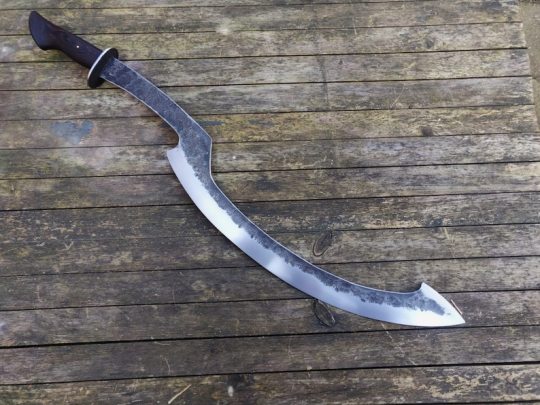
A Khopesh. But oh crap, a sickle that is a sword? A tool used both for combat, harvest, and a trade tool? Thats only 1/3 sword! What can we do to preserve our obviously pristine and infalliable "sword" categorization? Answer: call it "Sickle Shaped".
Look, I don't know how to end this besides saying that I do genuinely love swords. They've been coming of age gifts, presents for achievements, badges of honour, and in many cultures, like my ancestors, a symbol of love and unity. The very act of driving a sword deep into a pole to see how far it would go in as a "sign" of how long a marriage could last was part of some germanic/viking culture. Swords are awesome. But the classification and what we do and don't consider a sword is arbitrary, hypocritical, and stupid.
Go buy a sword for a loved one. The classification apparently doesn't matter so just make sure it looks "sword enough" and no one can argue with you.
#talisidekick#talisidekick things#swords#sword history#sword rant#not where I thought this was going but yeah: swords#trans#transgender#mtf#talisidekick rants
14 notes
·
View notes
Text
West African Takoba sword
Takoba (also takuba or takouba) is the sword that is used across the western Sahel and among ethnic groups such as the Tuareg, the Hausa, and the Fulani. It usually measures about one meter in length. Takoba blades are straight and double edged with a pronounced tapering from the guard towards the tip; they can exhibit several notable features, including three or more hand-ground fuller grooves…

View On WordPress
#African Art#African History#Fulani history#Fulani sword#Hausa history#Hausa sword#Sword history#swords#Takoba sword#Tuareg History#Tuareg sword#West African#West African history
3 notes
·
View notes
Note
I have been wondering about this for years and I need to know, how would someone carry a zweihander that is almost as tall as them? You can't really carry it in a normal scabbard
Great question! Here's a hastily thrown together video answer:
Essentially, scabbards are for conveniently carrying weapons when you don't expect to use them right now. Weapons of this size are so bulky that you simply wouldn't carry one /unless/ you intended to use it (even if what you intend to use it for is intimidation rather than actual combat). In which case, you want it in your hands, and ready for use.
(That's not to say that you couldn't make a scabbard design for a huge sword, and I've seen some viable options, but for the most part I don't think there's much point. I've taken weapons of this size to a LARP, and even if you can strap it to your back, you end up taking it off any time you want to go through a door, bend over, walk in a group, run, sit down, climb a tree, do a flip, tie your laces, or basically do anything that's not carefully walk in a straight line.)
16K notes
·
View notes
Text
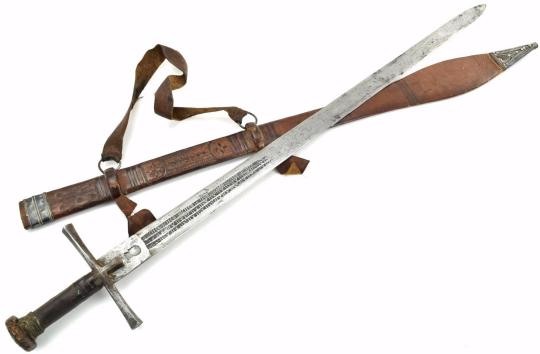

Sudanese kaskara, 19th century
from Sofe Design Auctions
2K notes
·
View notes
Note
Could I ask where dungeons of the kind in D&D came about? Like they’re a cultural icon now, but I don’t understand their origins very well
The dungeon crawl is a pretty standard trope in 1960s and 1970s sword and sorcery fiction and its near ancestors. A lot of ink has been spilled about how Dungeons & Dragons has become so creatively insular that it's basically emulating itself, and while there's some truth to that, the claim that dungeon crawls are part of that is a misconception. That bit is lifted more or less directly from the contemporary literature which original flavour D&D was inspired by – modern commentators tend to miss that because nobody reads sword and sorcery anymore. If you look at Fritz Leiber, Jack Vance, Robert Howard, you'll see dungeon crawls aplenty; Conan the Barbarian* went on not a few!
Of course, that just kicks the can down the road a bit: if Dungeons & Dragons got the dungeon crawl from 1960s and 1970s sword and sorcery fiction, where did they get it from? That's a question I'm less qualified to address, since literary history isn't my area. I know there are several students of early to mid 20th Century popular fiction following this blog, though; perhaps a qualified party can weigh in?
* Yes, I'm aware that Conan the Barbarian was 1930s; I'm including him in the "near ancestors" of 1960s sword and sorcery fiction
#gaming#tabletop roleplaying#tabletop rpgs#dungeons & dragons#d&d#history#ludology#media#literature#sword and sorcery#fantasy
3K notes
·
View notes
Text
More on pre-electricity lighting.
Interesting to see this one pop up again after nearly two years - courtesy of @dduane, too! :->
*****
After experiencing a couple more storm-related power cuts since my original post, as well as a couple of after-dark garden BBQs, I've come to the conclusion that C.J. Cherryh puts far too much emphasis on "how dark things were pre-electric light".
For one thing eyes adjust, dilating in dim light to gather whatever illumination is available. Okay, if there's none, there's none - but if there's some, human eyes can make use of it, some better or just faster than others. They're the ones with "good night vision".
Think, for instance, of how little you can see of your unlit bedroom just after you've turned off the lights, and how much more of it you can see if you wake up a couple of hours later.
There's also that business of feeling your way around, risking breaking your neck etc. People get used to their surroundings and, after a while, can feel their way around a familiar location even in total darkness with a fair amount of confidence.
Problems arise when Things Aren't Where They Should Be (or when New Things Arrive) and is when most trips, stumbles, hacked shins and stubbed toes happen, but usually - Lego bricks and upturned UK plugs aside - non-light domestic navigation is incident-free.
*****
Here are a couple of pics from one of those BBQs: one candle and a firepit early on, then the candle, firepit and an oil lamp much later, all much more obvious than DD's iPad screen.

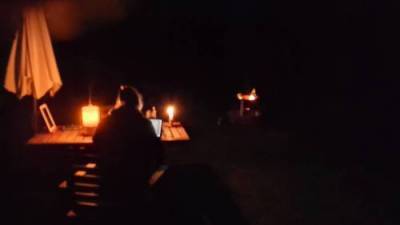
Though I remain surprised at how well my phonecam was handling this low light, my own unassisted eyes were doing far better. For instance, that area between the table and the firepit wasn't such an impenetrable pool of darkness as it appears in the photo.
I see (hah!) no reason why those same Accustomed Eyes would have any more difficulty with candles or oil lamps as interior lighting, even without the mirrors or reflectors in my previous post.
With those, and with white interior walls, things would be even brighter. There's a reason why so many reconstructed period buildings in Folk Museums etc. are (authentically) whitewashed not just outside but inside as well. It was cheap, had disinfectant qualities, and was a reflective surface. Win, win and win.
*****
All right, there were no switches to turn on a light. But there was no need for what C.J. describes as stumbling about to reach the fire, because there were tinderboxes and, for many centuries before them, flint and steel. Since "firesteels" have been heraldic charges since the 1100s, the actual tool must have been in use for even longer.
Tinderboxes were fire-starter sets with flint, steel and "tinder" all packed into (surprise!) a box. The tinder was easily lit ignition material, often "charcloth", fabric baked in an airtight jar or tin which would now start to glow just from a spark.
They're mentioned in both "The Hobbit" and "The Lord of the Rings". Oddly enough, "Hobbit" mentions matches in a couple of places, but I suspect that's a carry-over from when it was just a children's story, not part of the main Legendarium.
Tinderboxes could be simple, just a basic flint-and-steel kit with some tinder for the sparks to fall on...

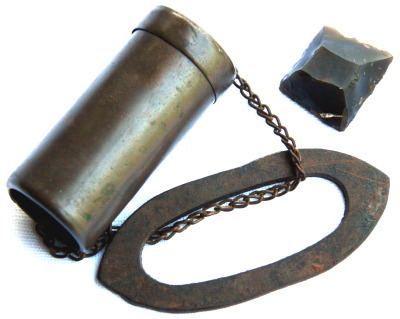
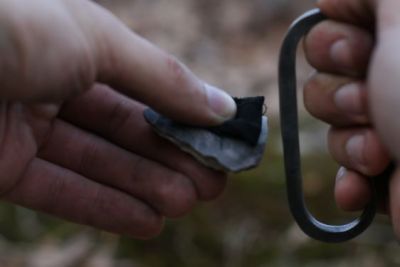
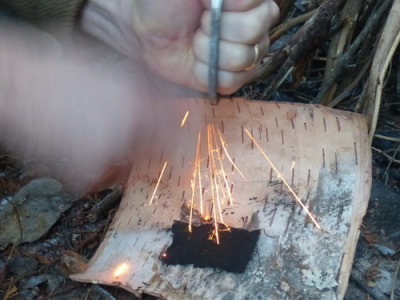
...or elaborate like this one, with a fancy striker, charcloth, kindling material and even wooden "spills" (long splinters) to transfer flame to a candle or the kindling...

This tinderbox even doubles as a candlestick, complete with a snuffer which would have been inside along with everything else.

Here's a close-up of the striker box with its inner and outer lids open:
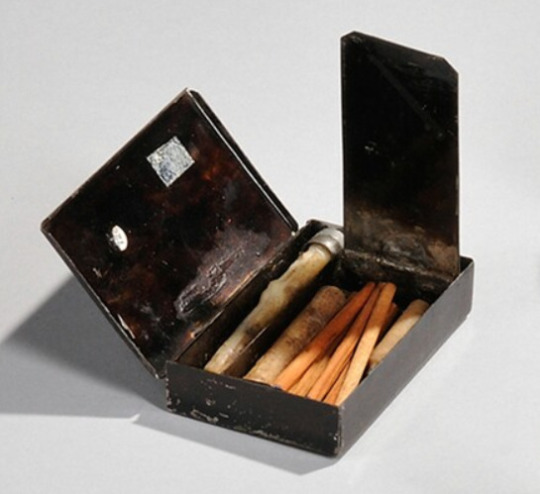
What looks like a short pencil with an eraser is actually the striker. A bit of tinder or charcloth would have been pulled through that small hole in the outer lid, which was then closed.
There was a rough steel surface on the lid, and the striker was scraped along it, like so:

This was done for a TV show or film, so the tinder was probably made more flammable with, possibly, lighter fuel. That would be thoroughly appropriate, since a Zippo or similar lighter works on exactly the same principle.
A real-life version of any tinderbox would usually just produce glowing embers needing blown on to make a flame, which is shown sometimes in movies - especially as a will-it-light-or-won't-it? tension build - but is usually a bit slow and non-visual for screen work.
*****
There were even flintlock tinderboxes which worked with the same mechanism as those on firearms. Here's a pocket version:
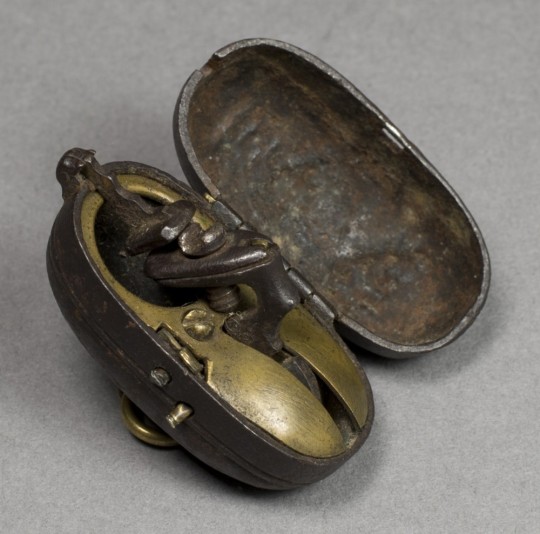
Here are a couple of bedside versions, once again complete with a candlestick:
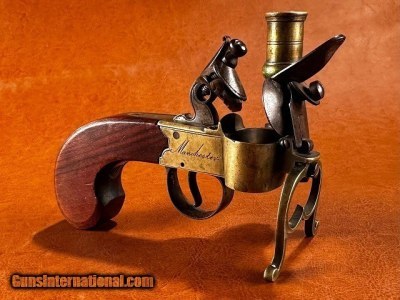
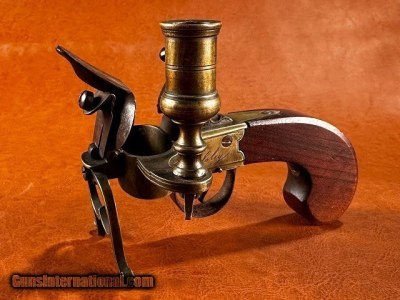
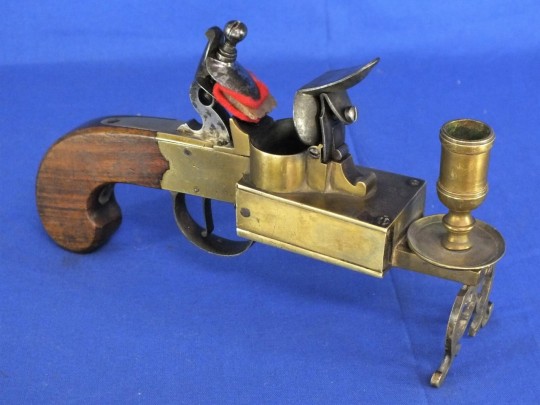
And here are three (for home defence?) with a spotlight candle lantern on one side and a double-trigger pistol on the other.


Pull one trigger to light the candle, pull the other trigger to fire the gun.
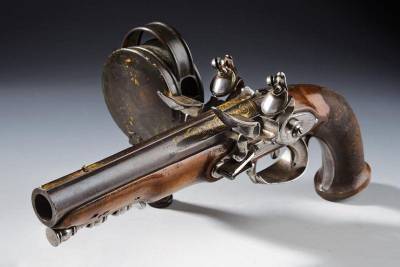

What could possibly go wrong? :-P
*****
Those pistol lanterns, magnified by lenses, weren't just to let their owner see what they were shooting at: they would also have dazzled whatever miscreant was sneaking around in the dark, irises dilated to make best use of available glimmer.
Swordsmen both good and bad knew this trick too, and various fight manuals taught how to manage a thumb-shuttered lamp encountered suddenly in a dark alley.
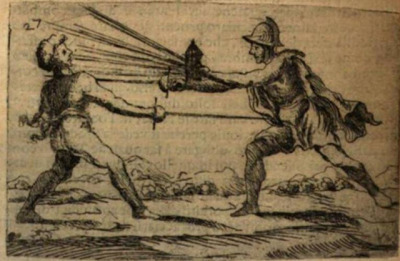
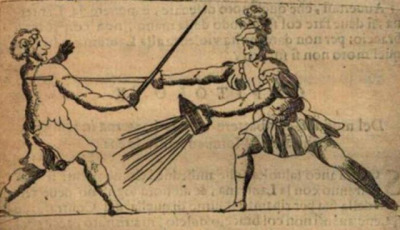
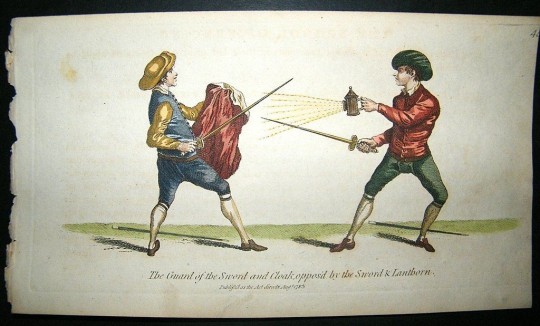
There's a sword-and-lantern combat in the 1973 "Three Musketeers" between Michael York (D'Artagnan) and Christopher Lee (Rochefort), which was a great idea.
Unfortunately it failed in execution because the "Hollywood Darkness" which let viewers see the action, wasn't dark enough to emphasise the hazards / advantages of snapping the lamps open and shut.
This TV screencap (can't get a better one, the DVD won't run in a computer drive) shows what I mean.
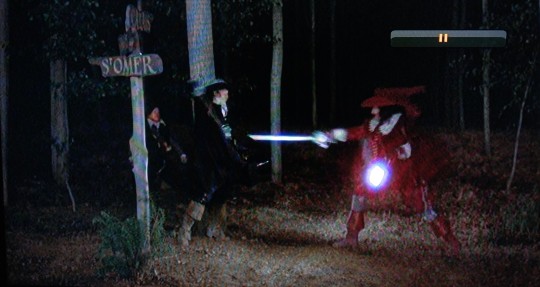
In fact, like the photos of the BBQ, this image - and entire fight - looks even brighter through "real eyes" than with the phonecam. Just as there can be too much dark in a night scene, there can also be too much light.
*****
One last thing I found when assembling pics for the post were Folding Candle-lanterns.
They were used from about the mid-1700s to the later 20th century (Swiss Army ca. 1978) as travel accessories and emergency equipment, and IMO - I've Made A Note - they'd fit right into a fantasy world whose tech level was able to make them.
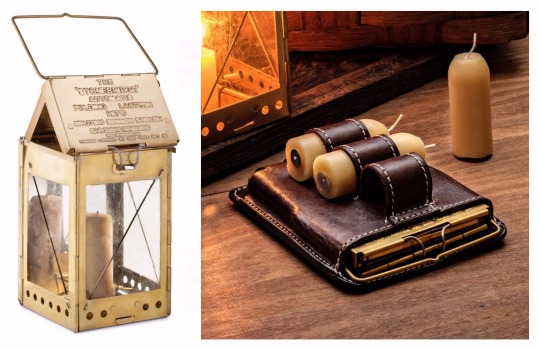
The first and last are reproductions: this one is real, from about 1830.
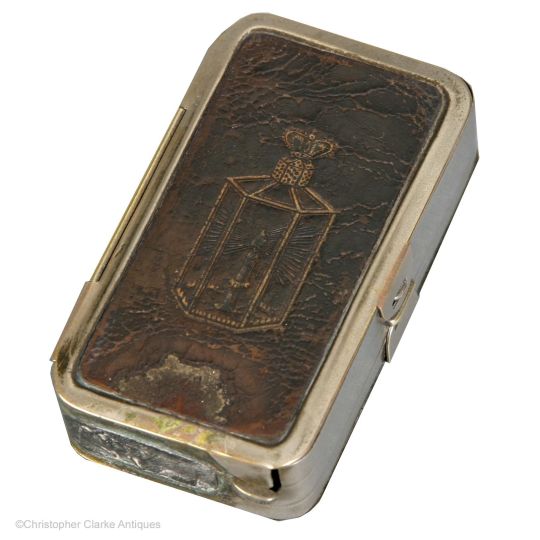
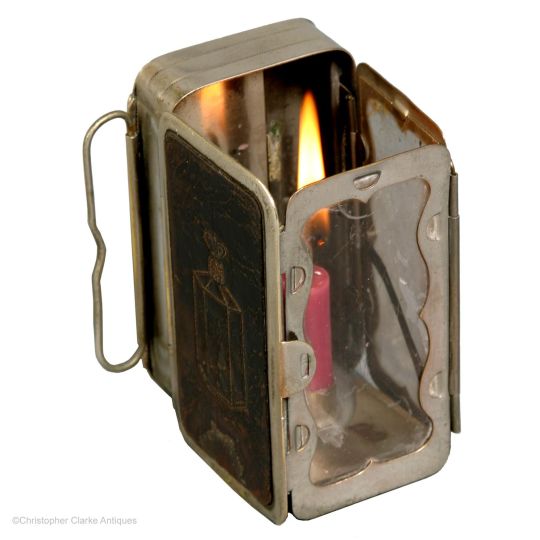
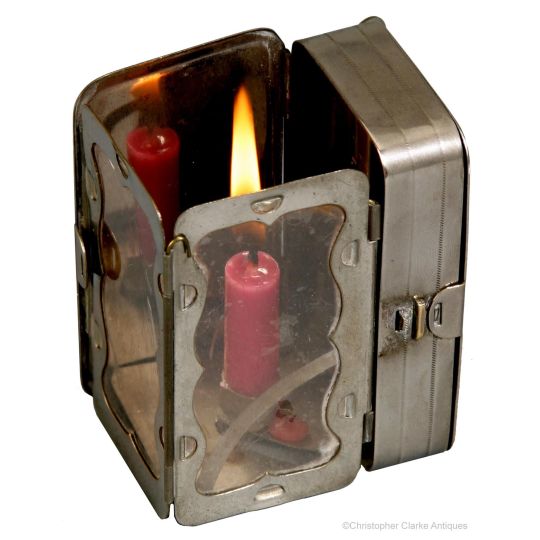
The clear part was mica - a transparent mineral which can be split into thin flexible sheets - while others use horn / parchment, though both of these are translucent rather than transparent. Regardless, all were far less likely to break than glass.
One or two inner surfaces were usually tin, giving the lantern its own built-in reflector, and tech-level-wise, tin as a shiny or decorative finish has been used since Roman times.
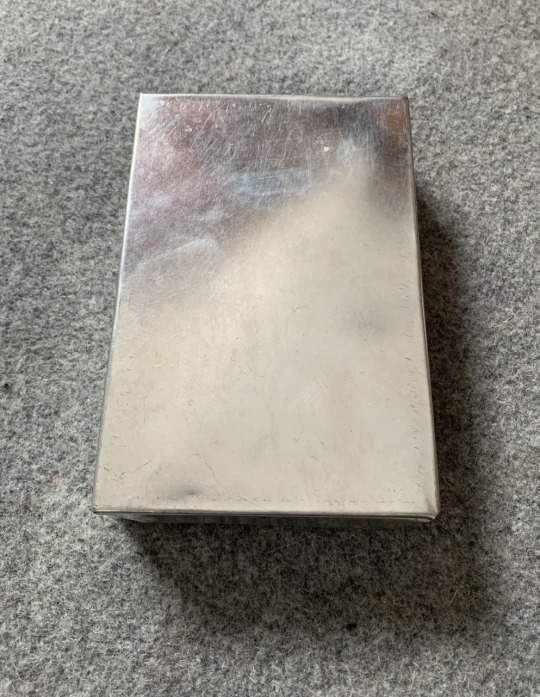

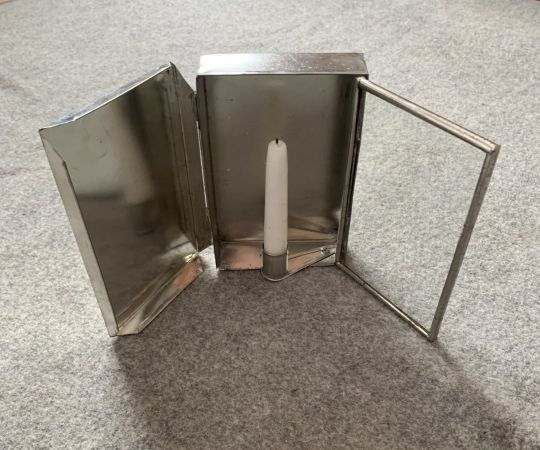
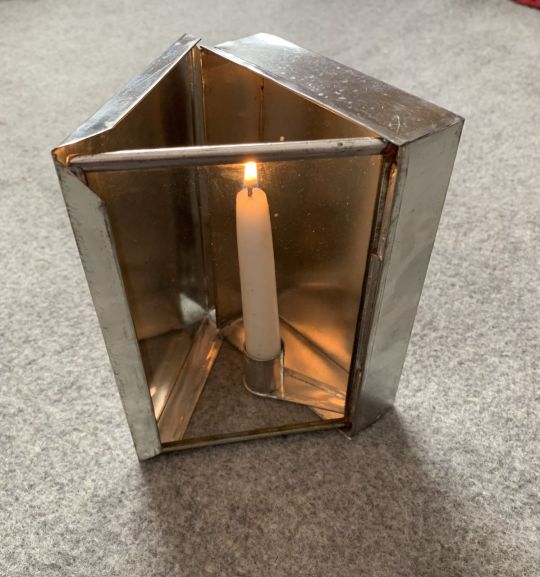
I'm pretty sure that top-of-the-line models could also have been finished with their own matching, maybe even built-in, tinderboxes.
And if real ones didn't, fictional ones certainly could. :->
*****
Yet more period lighting stuff here, including flintlock alarm clocks (!)
#period lighting#tinderbox#too light too dark#social history#writer notes#research#period tech#sword vs lantern#c. j. cherryh
2K notes
·
View notes
Note
Who made the biggest sword ever?
"Biggest" can mean a few things:
The heaviest sword of all time is the 468lb "Le Glaive Chungeuse" of King Louis LXIX, so heavy nobody could wield it.
The longest sword ever made was the Gobai-nodachi, or "quintuple length longsword" forged by Masayoshi Johnson for a ceremony said to have resulted in the deaths of everyone present.
The thickest sword, three feet thick but only six inches long, was the Hungarian Chodesaber, which was used mostly for flattening dough.
The widest sword is currently the Grand Coronation Stub of King Charles, ruler of England as of March 2024. Shaped like a shallow isosceles triangle, its tip is almost 165 degrees.
The most expensive sword ever forged was the Diamond Sprinklesword of Muffy von Fitzwiggle-Plumnugget, which a rich Californian gave to his chihuahua for its third birthday. It could have paid to feed 30 billion people for five lifetimes.
The "biggest" sword in terms of fame and notoriety is the Sword of Damocles, which metaphorically hangs over the head of those with power as a reminder to be responsible lest they grow greedy or despotic. It has not been seen since around November of 2016.
Though not "big" per se, the sharpest sword of all time is currently being constructed at the Large Hadron Collider at CERN, and will be exactly one hydrogen ion thick at its point. It will be used exclusively to get the gunk out from the fingernails of the intern who is forging it. And God knows Harold needs it, just look at them on his facebook they're fucking disgusting.
1K notes
·
View notes
Text

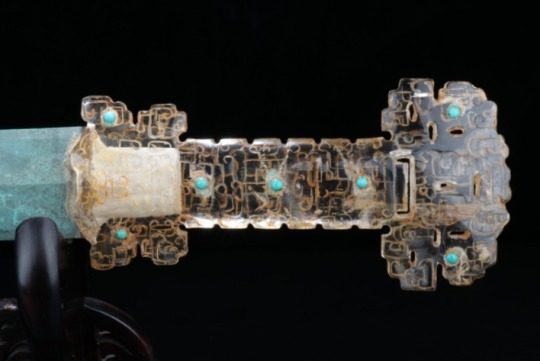
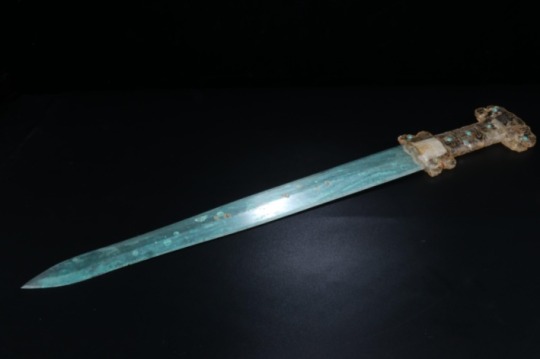
Chinese Bronze Sword With An Inlaid Rock Crystal, Turquoise and Gold Hilt
Warring States Period, Circa 4th - 2nd Century B.C.
#Chinese Bronze Sword With An Inlaid Rock Crystal Turquoise and Gold Hilt#Warring States Period#Circa 4th - 2nd Century B.C.#bronze#bronze sword#ancient artifacts#archeology#archeolgst#history#history news#ancient history#ancient culture#ancient civilizations#ancient china#chinese history#chinese art#art
2K notes
·
View notes
Text

#vintage#dark academia#dark femininity#art#aesthetic#vintage aesthetic#dark art#painting#swords#history#fantasy#dark aesthetic#female hysteria#medieval#culture#leonor de aquitania
922 notes
·
View notes
Photo

Wall exhibit of various two-handed broadswords
Danish Middle Ages and Renaissance Exhibit
Danish History Museum
Copenhagen, Denmark
#history#historyblr#history museum#history museums#museum#museums#broadswords#history of weapons#weapons history#two-handed broadswords#historical swords#historical broadswords#swords#copenhagen#denmark#danish history museum#danish middle ages#middle ages
4K notes
·
View notes
Text
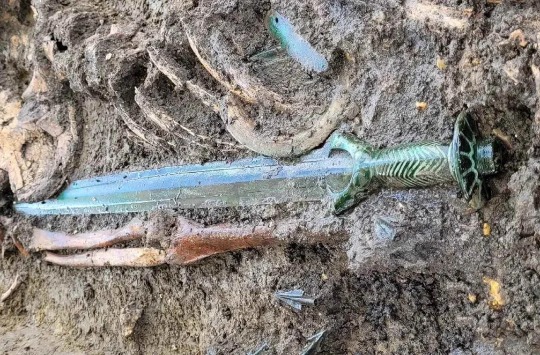

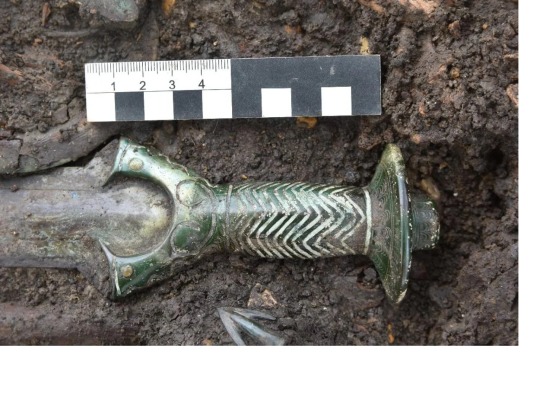
A 3,000-year-old bronze sword that was unearthed in Germany.
Via Reddit
1K notes
·
View notes
Text

Cardinals' quarrel by Théobald Chartran
#théobald chartran#art#cardinal#cardinals#quarrel#sword#swords#history#europe#european#christianity#christian#religion#religious#duel#holy see#papal#church#cathedral#pope#vatican#archbishop
1K notes
·
View notes
Text
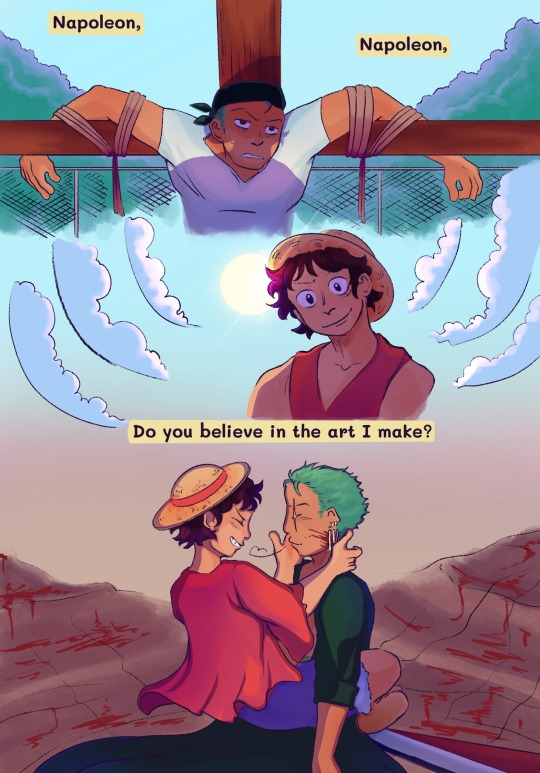
Aligned with the Emperor
#one piece#one piece fanart#zolu#monkey d luffy#roronoa zoro#monkey d. luffy#zoro#one piece luffy#one piece zoro#im still on my qpr zolu agenda trust! but you may take it as you will#anyways obscure art history moment this is literally based on jacques-louis david who was imprisoned during the wane of the french#revolution and after getting out linked up with napoleon AND he painted oath of the horatii. three swords
472 notes
·
View notes
Text
Having to confront the possibility that this rivalry will never get better than this
#the capaldi era is my favorite Master storyline in history but bros...#they didn't homoerotically sword fight in that#doctor who#doctor who liveblogs#dw liveblog season 9#the doctor#third doctor#the master
702 notes
·
View notes
Text

Sword of Justice from Solingen, Germany, circa 1670-1700.
6K notes
·
View notes